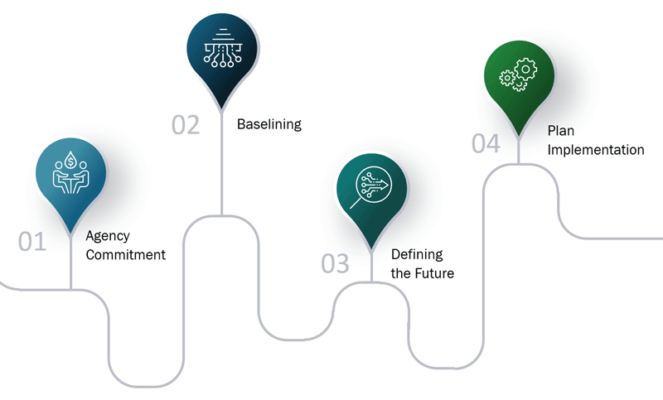IoT Adoption Takes a Cultural Shift

As populations grow, water scarcity increases, and water utility companies are being tasked to find new ways to deliver a high-quality product at the lowest cost. Similar to the manufacturing industry, water utilities often face limited resources, operational silos, and antiquated business models. Manufacturers have embraced digital transformation to create smart factories, and to create smart cities, utilities must make the transition, too. But utilities face an issue that manufacturers usually don’t—product perception.
“On one hand, a water utility is like a business, taking a raw product, transforming it into what the customer wants, and delivering it,” says Dr. Alison Adams, principal water resources engineer for Intera, a geoscience and engineering solutions provider. “On the other hand, water is viewed by society as a public good. When you’re a utility, you can’t just charge what you want to recoup your investment like another type of business could.”
Meeting the demands of the customer while addressing the needs for more efficient operations is a balancing act, and the only solution is technology.
Edge Analytics Create Smart Cities
For decades, building new water supply systems was a relatively inexpensive venture, with readily available federal funding for capital improvements. Today, money is tighter. Yet the need for providing the product is not going away.
“There’s no time like the present for water utilities to start taking advantage of technology,” says Adams. “Not just in terms of replacing or enhancing what people do on the job, but also for collecting information to make smarter decisions and to become a more efficient, effective organization.”
Utilities already collect a lot of data about water quality due to regulations. Historically, information was gathered manually. But today, AI technology, edge analytics, and cloud computing can streamline the process, providing real-time data that can optimize existing systems. Utilities can also gain insights on usage patterns from customer billing data, helping them guide operations for long-term strategic planning.
But there’s a dam in the digital transformation flow: the industry’s culture.
“Water utilities are a very old business, and the way they’ve gone about planning and strategic decision-making has been pretty old-school,” says Adams.
Silos block the share of data, which often leads to duplicated efforts. To achieve efficiency, operations technology and information technology must come together.
“These folks had never had an opportunity to talk to each other,” says Adams. “Once you start getting people together, they discover they can benefit from sharing information. When they begin to understand the different functions and work more cohesively, they can improve the overall efficiency and effectiveness of the organization.”
AI technology, edge analytics, and cloud computing collect data and optimize existing systems, guiding operations for long-term strategic planning.
AI Adoption Requires a Culture Shift
Intera helps utilities overcome huge cultural issues with a four-step approach (Figure 1).

To begin digital transformation, utilities need buy-in and commitment from top leadership. The next step is baselining current systems to find opportunities for creating standard operating procedures. Utilities then start identifying priorities with resource estimates and timelines, creating a vision for the future. Implementing the plan puts it all into action, deploying an end-to-end solution that leverages IoT technology to create more efficient and resilient organizations.
Tampa Bay Water provides a good example of how Intera puts its plan to work. As Florida’s largest wholesale public water utility, Tampa Bay Water provides approximately 260 million gallons of drinking water per day to meet the needs of 2.4 million residential customers. Due to environmental regulations, the utility needed to diversify its water collection process, which had solely relied on groundwater methods. But the change would require improvements in the way data was collected, stored, and used by agency staff.
The utility didn’t have standard quality control protocols or a centralized database. Information was recorded on Excel spreadsheets or written reports and stored on individual computers. A supervisory control and data acquisition (SCADA) system was used for industrial control and gathering operational data, but this information was not used for planning purposes and manual methods were needed to obtain data.
The expansion of water collection sites would increase SCADA collection points from 2,500 to 22,500. Tampa Bay Water senior management recognized it needed to centralize its data and adopt IoT technology to gain a comprehensive picture of operations to make better decisions in real time. Intera worked with the utility to identify its shortcomings and priorities. It developed and implemented analytical tools to translate data into actionable information. A new enterprise-wide database was also developed and implemented.
Leveraging Intel® processors and edge analytics, a system that streamlined data collection and delivered real-time information to help the utility make better decisions was created.
“Intel helps us make the best use of the technology,” says Adams. “We get opportunities to explore new tools that we hadn’t thought of for collecting information and using it in decision-making.” Having Intel as a partner ensures that Intera can continue to provide utilities with the latest capabilities for analytics and problem-solving.
Tampa Bay Water now employs an adaptive management approach for planning and operating its water supply facilities. “While the utility is well on its way to digital transformation, the process is never complete,” says Adams. “As new technology and work processes are developed, the need to continue transforming remains. And it is a goal of the agency to continue the use of this technology to maintain a streamlined organization.”